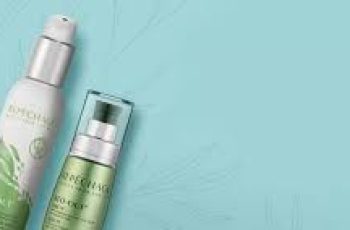
If you’re an advanced skincare user or a curious consumer, you are probably very familiar with Retinoids / Retinol. This potent active skin care ingredient is considered the ‘fountain of youth’. It is often credited with being the most effective at reducing wrinkles, hyperpigmentation, and acne and improving skin tone.
Retinoids have been extensively researched since the ’40s and have been used primarily to control acne. A 1983 study proved that retinoic acid can manage skin ageing. Fast forward to the ’90s, a milder form of Retinoid, Retinol, was available, and since then, Retinoids have become the gold standard of anti-ageing skincare. They are trendy as they are available over the counter and affordable, and some have lower irritation risk. Newcomers like Granactive Retinoid and Bakuchiol are the latest additions to the extended Retinoid family.
In this article, you will learn:
Retinoids definition
types of Retinoids by strength and efficacy
how they work
benefits and side effects
natural Retinoids alternatives
dos and don’ts
how fast can you expect results
What are Retinoids
The term RETINOID is used for Vitamin A derivates; they have been extensively researched and have been used topically to heal acne, reduce wrinkles, stimulate collagen synthesis, and smooth skin.
RETINOID = a category of skincare active ingredients
|
RETINOL = a form of Retinoid
RETINOIDS can be synthetic and animal derived.
The natural equivalent to RETINOIDS is CAROTENOIDS (precursors of Retinol) and TRANS RETINOIC ACID, or Pro-vitamin A + a newcomer, Bakuchiol (more on this below).
Many Retinoids are available, both cosmetic grade and prescription-only, offering solutions for all skin types, from low potency with low irritation risk to prescription-only with a higher chance of skin reaction.
Native Essentials Skincare Retinoids
How do Retinoids work
Retinoids are available in different forms; some Retinoids are immediately activated as soon as applied topically, like Tretinoin or Cacay oil (Retinoic acid/Trans Retinoic acid); weaker Retinoids need to undergo a ‘conversion’ on the skin to become Retinoic acid/Trans Retinoic acid. The more passages, the weaker the final effect on the skin.
Retinoic acid / Trans Retinoid acid interact directly with the skin’s Retinoid receptors (RAR, RXR), signaling and modulating the skin to repair itself, generate more collagen, and stimulate fibroblasts to synthesize more collagen fibers and remove degenerated elastin fibers.
There is an exception, Bakuchiol; it’s not classified as a Retinoid but its function mimics exactly what Retinoids do.
Native Essentials Skincare Retinoids conversion
Benefits and Side Effects of Retinoids
Here is what both synthetic and natural Retinoids do (with variable degree of efficacy based on the type of Retinoid used):
THE GOOD NEWS
reduce fine lines and wrinkles by stimulating the synthesis of new collagen
inhibit enzymes that breakdown and deplete collagen
smooth the skin by modulating the genes involved in skin cell turnover
fade dark spots by peeling off dead skin thus removing old pigmented cells, replacing them with normally pigmented ones
unclog pores
heal acne fast and prevent further acne scarring
exfoliate the skin
stimulate the production of new blood vessels in the skin to improve color
But here is what synthetic and strong Retinols (Retinoic acid, Retinal, Retinol) also can cause:
THE BAD NEWS
dryness and peeling
redness
itching
burning
stinging
irritation
UV sensitivity (that’s why you need to apply them at night)
not suitable during pregnancy and while breastfeeding
may aggravate acne rosacea
***Results from Reinoid usage vary individually. Some of the side effects will disappear after the skin acclimatizes, but in some cases, if the irritation persists, you need to switch to a weaker Retinoid or discontinue.
No side effects with Natural Retinoids
Every skin is unique and it can react to new skincare ingredients in different ways. However, a few studies indicate that natural sources of pro-vitamin A and carotenoids are very well tolerated by all skin types, compared to synthetic Retinoids of similar strength. They are also less drying, more soothing and nourishing that their synthetic counterparts. More evidence is needed, but we know that:
BAKUCHIOL
Is a plant-based ingredient extracted from the seeds and leaves of the Bakuchi/Babchi tree (Psoralea corylifolia). It is a retinol-analogue, because it mimics the action of retinol minus the negative side effects, and it can be used even on delicate areas like the eyes contour.
The peculiarity of BAKUCHIOL is that it performs like a Retinoid but it doesn’t seem to act via the same retinoic acid skin receptors. More research is needed to further confirm the action mechanism, but the results are already very encouraging. Bakuchiol is not very effective in healing acne, but it works very well for fine lines, wrinkles, discoloration, and uneven tone.
We have formulated NOOR • Retinol Eye Oil with Bakuchiol
ROSEHIP OIL, CACAY OIL
They are both rich in ready-available Trans Retinoic acid, the natural equivalent to Retinoic acid aka Tretinoin, the most potent form of Retinoid. Thanks to their complex composition, Rosehip and Cacay add a soothing, calming, anti-inflammatory action with no side effects. No wonder why they are superstar age-delay plant oils!
SHAANT • Regenerating Luxe Oil is formulated with organic Rosehip oil, and
AZUR • Calming Light Oil with Cacay Oil.
BETA-CAROTENE RICH OILS
Rosehip, Sea Buckthorn, Carrot Seeds, Red Palm oil are rich in Beta-Carotene, a form of provitamin A. They convert to Trans Retinoic acid. They are comparable to weaker Retinoids but they are well tolerated by all skin types, even sensitive.
SHAANT • Regenerating Luxe Oil is very rich in beta-carotene (Rosehip, Sea Buckthorn)
How to use Retinoids
Strong Retinoids have a pH range of 4–6.6 (oils like Rosehip, Cacay, Bakuchiol are not pH dependent); as the skin and the acid mantle needs to adjust to the potent action of Retinoids, follow the 8 do’s and don’ts:
Native Essentials skincare dos and don’ts of Retinoids
How long does it take to see results?
Retinoids ‘reprogram and speed up’ the skin renewal process, and this takes time and regular use.
Start synthetic Retinoids gradually while natural Retinoids can be used regularly from the beginning, and once you have achieved your optimum routine you can expect:
Native Essentials Skincare How fast Retinols work
Are you using Retinoids? Share your experience with us in the comments below.


